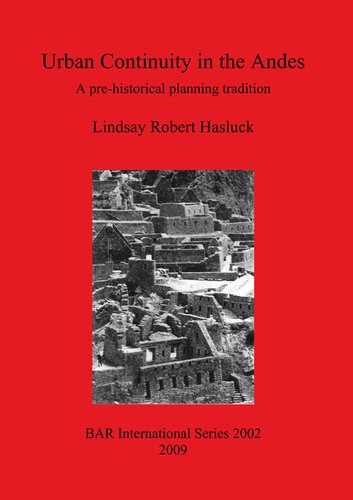

Most ebook files are in PDF format, so you can easily read them using various software such as Foxit Reader or directly on the Google Chrome browser.
Some ebook files are released by publishers in other formats such as .awz, .mobi, .epub, .fb2, etc. You may need to install specific software to read these formats on mobile/PC, such as Calibre.
Please read the tutorial at this link: https://ebookbell.com/faq
We offer FREE conversion to the popular formats you request; however, this may take some time. Therefore, right after payment, please email us, and we will try to provide the service as quickly as possible.
For some exceptional file formats or broken links (if any), please refrain from opening any disputes. Instead, email us first, and we will try to assist within a maximum of 6 hours.
EbookBell Team

4.3
88 reviewsThis work investigates the evolution of urban design in the Andes of South America to ascertain if there existed in pre-Hispanic times a shared Andean tradition of urban planning. Since, in previous research, Andean urban planning has been treated as the product of individual sites or cultures, this study explores the repeated use of design elements within Andean urban planning, in order to isolate specific elements for individual functional analysis within the context of a cultural tradition. The primary focus is to demonstrate clearly the urban design connection that forms a coherent Andean urban planning tradition shared between the urban civilizations of the Andes from the inception of urbanism around the beginning of the third millennium BC until the cultural disruption of the Spanish conquest in the mid-sixteenth century AD. Through the investigation and understanding of the evolving sophistication of the cultures within the Andes cultural, political and geographical region, the study demonstrates that certain ideas of urban design, from very early times, began to form a coherent planning tradition that was shared by civilizations, cultures and settlements in close and distant contact. Moreover, these ideas for architectural designs and layouts for urban areas were not only shared geographically but also repeated through time.